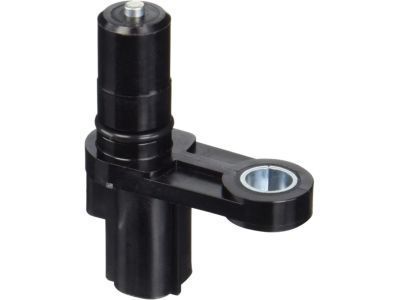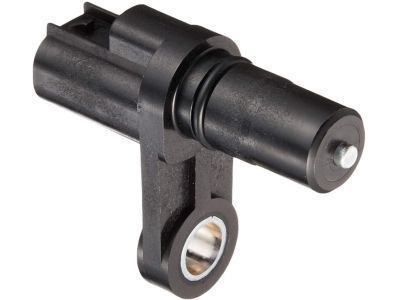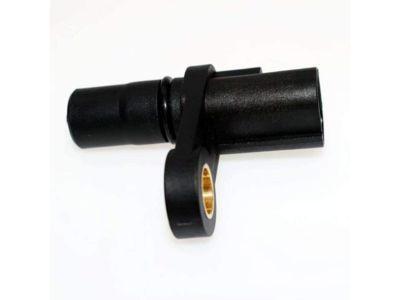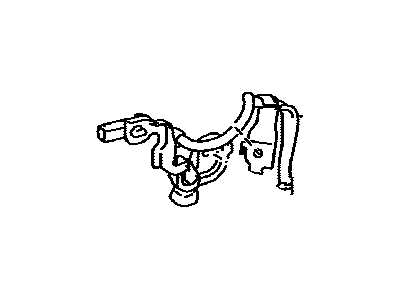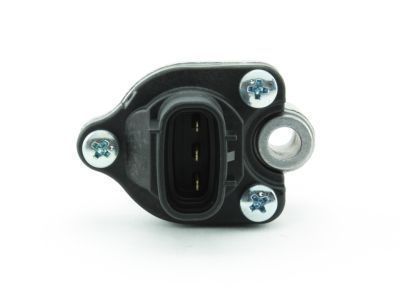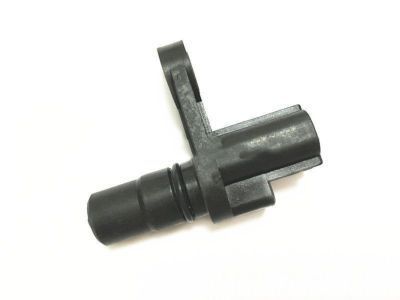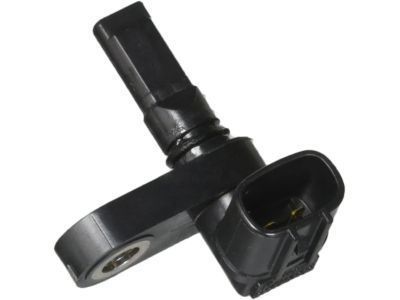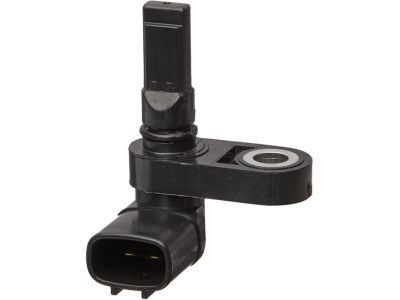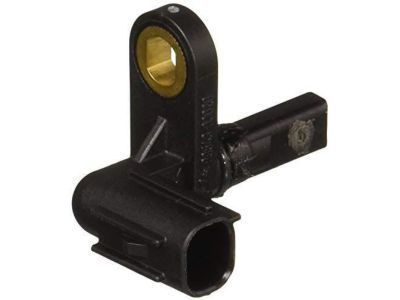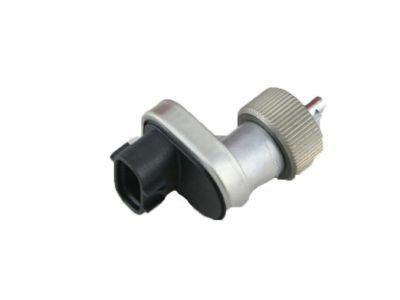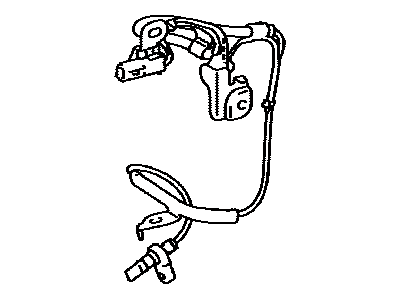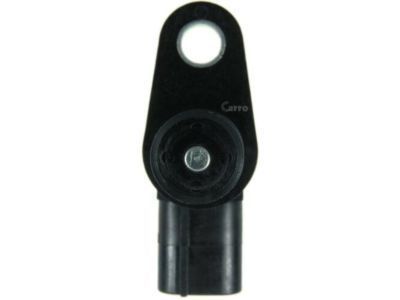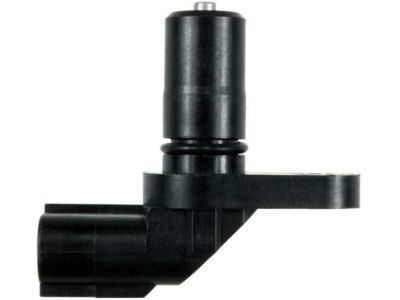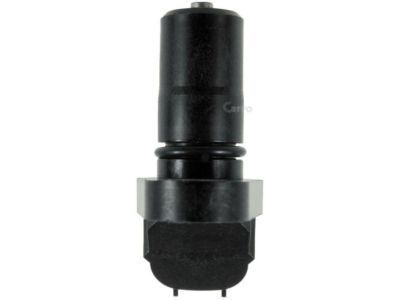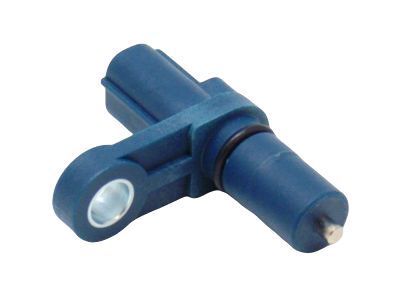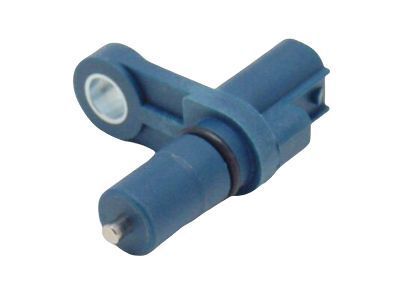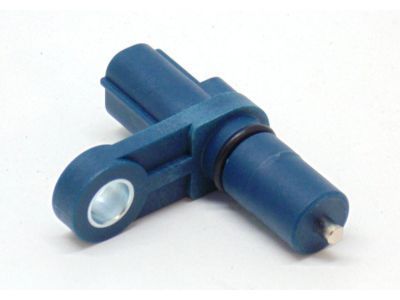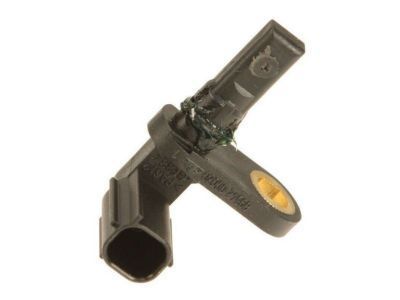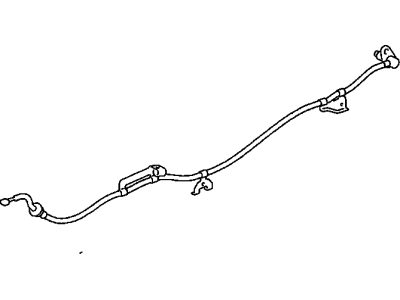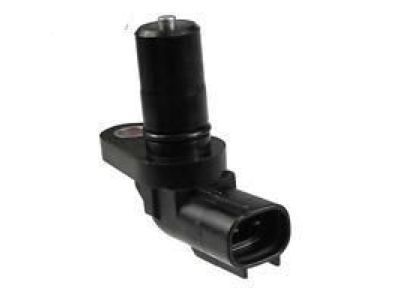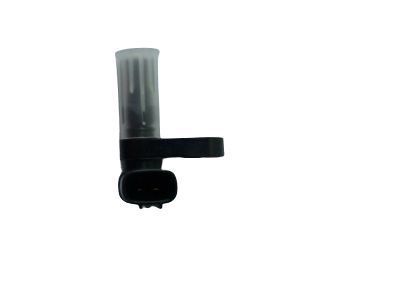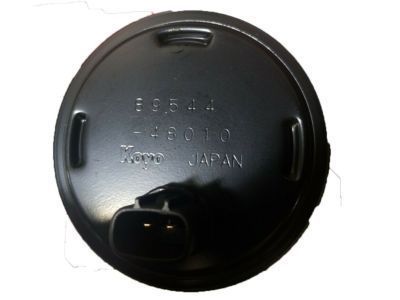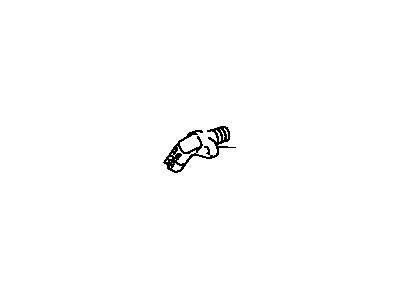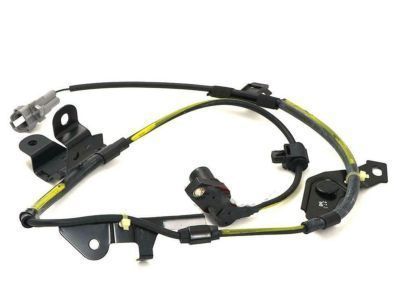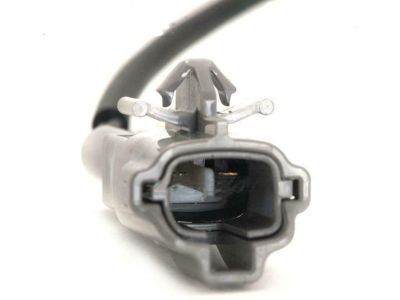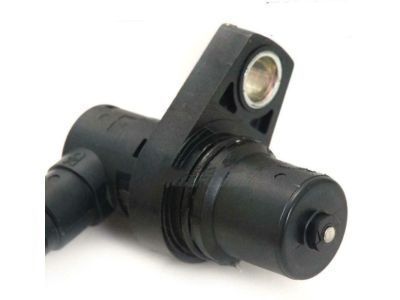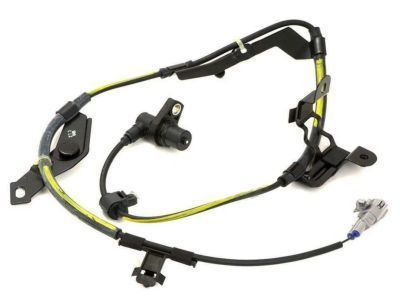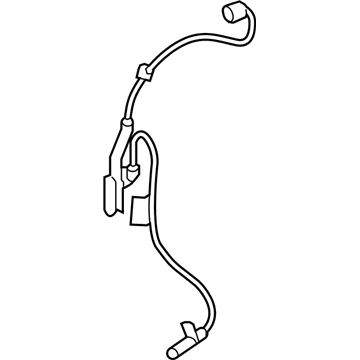

My Garage
My Account
Cart
Genuine Toyota Speed Sensor
Speed Control Sensor- Select Vehicle by Model
- Select Vehicle by VIN
Select Vehicle by Model
orMake
Model
Year
Select Vehicle by VIN
For the most accurate results, select vehicle by your VIN (Vehicle Identification Number).
457 Speed Sensors found
Toyota Sensor, Transmission Revolution
Part Number: 89413-08020$138.05 MSRP: $196.26You Save: $58.21 (30%)Ships in 1-3 Business DaysProduct Specifications- Other Name: Speed Sensor, Vehicle Speed Sensor
- Replaces: 89413-33020, 89413-24010, 89411-33010
Toyota Sensor, Speedometer
Part Number: 83181-12020$271.08 MSRP: $388.71You Save: $117.63 (31%)Ships in 1-2 Business DaysProduct Specifications- Replaces: 83181-12070
Toyota Sensor, Transmission Revolution
Part Number: 89413-24010$138.05 MSRP: $196.26You Save: $58.21 (30%)Ships in 1-2 Business DaysProduct Specifications- Other Name: Sensor, Speed
- Replaced by: 89413-08020
Toyota Front Speed Sensor Left Hand
Part Number: 89543-60050$223.87 MSRP: $321.01You Save: $97.14 (31%)Ships in 1-3 Business DaysProduct Specifications- Other Name: Sensor, Speed, Front LH
- Position: Front Driver Side
- Replaced by: 89543-04020
Toyota Sensor, Speedometer
Part Number: 83181-12040$298.11 MSRP: $427.47You Save: $129.36 (31%)Ships in 1-3 Business DaysToyota Sensor, Transmission Revolution
Part Number: 89413-48010$128.57 MSRP: $157.01You Save: $28.44 (19%)Ships in 1-3 Business DaysProduct Specifications- Other Name: Sensor, Speed; Speed Sensor, Vehicle Speed Sensor
- Replaces: 89413-33010, 89413-08010
Toyota Front Speed Sensor Left Hand
Part Number: 89543-04020$223.87 MSRP: $321.01You Save: $97.14 (31%)Ships in 1-2 Business DaysProduct Specifications- Other Name: Sensor, Speed, Front LH
- Position: Front Driver Side
- Replaces: 89543-60050
Toyota Front Speed Sensor Right Hand
Part Number: 89542-04020$223.87 MSRP: $321.01You Save: $97.14 (31%)Ships in 1-2 Business DaysProduct Specifications- Other Name: Sensor, Speed, Front RH
- Position: Front Passenger Side
- Replaces: 89542-60050
Toyota Front Speed Sensor Left Hand
Part Number: 89543-0C020$234.89 MSRP: $336.82You Save: $101.93 (31%)Ships in 1-3 Business DaysProduct Specifications- Other Name: Sensor, Speed, Front LH
- Position: Front Driver Side
Toyota Sensor, Speedometer
Part Number: 83181-20040$340.68 MSRP: $488.51You Save: $147.83 (31%)Ships in 1-2 Business DaysProduct Specifications- Other Name: Speedometer Sensor
Toyota Front Speed Sensor Right Hand
Part Number: 89542-0R010$223.87 MSRP: $321.01You Save: $97.14 (31%)Ships in 1-3 Business DaysProduct Specifications- Other Name: Sensor, Speed, Front RH; ABS Sensor, Front Speed Sensor, Speed Sensor
- Position: Front Passenger Side
- Replaces: 89542-42050
Toyota Sensor, Transmission Revolution
Part Number: 89413-32010$110.79 MSRP: $156.17You Save: $45.38 (30%)Ships in 1-3 Business DaysProduct Specifications- Manufacturer Note: (J)
- Replaced by: 89413-0C011
Toyota Sensor, Transmission Revolution
Part Number: 89413-08010$128.57 MSRP: $157.01You Save: $28.44 (19%)Ships in 1-2 Business DaysProduct Specifications- Replaced by: 89413-48010
Toyota Front Speed Sensor Right Hand
Part Number: 89542-0C020$245.91 MSRP: $352.61You Save: $106.70 (31%)Ships in 1 Business DayProduct Specifications- Other Name: Sensor, Speed, Front RH
- Position: Front Passenger Side
Toyota Sensor, Transmission
Part Number: 89413-0C011$110.79 MSRP: $156.17You Save: $45.38 (30%)Ships in 1-3 Business DaysProduct Specifications- Other Name: Vehicle Speed Sensor
- Manufacturer Note: (L)
- Replaces: 89413-0C010, 89413-32011, 89413-32010
Toyota Front Speed Sensor Right Hand
Part Number: 89542-60050$223.87 MSRP: $321.01You Save: $97.14 (31%)Ships in 1-2 Business DaysProduct Specifications- Other Name: Sensor, Speed, Front RH
- Position: Front Passenger Side
- Replaced by: 89542-04020
Toyota Sensor, Skid Control
Part Number: 89544-48010$200.09 MSRP: $246.44You Save: $46.35 (19%)Ships in 1-3 Business DaysProduct Specifications- Other Name: ABS Rotor, ABS Sensor, Rear Speed Sensor, Sensor
- Replaces: 89544-48020, 89544-06020, 89544-06010
Toyota Speed Sensor
Part Number: 89411-50010$85.18 MSRP: $103.15You Save: $17.97 (18%)Ships in 1-3 Business DaysProduct Specifications- Other Name: Sensor, Speed
Toyota Front Speed Sensor Right Hand
Part Number: 89542-35050$278.62 MSRP: $399.52You Save: $120.90 (31%)Ships in 1 Business DayProduct Specifications- Other Name: Sensor, Speed, Front RH; ABS Sensor Wire, Front Speed Sensor, Speed Sensor
- Position: Front Passenger Side
Toyota Sensor, Speed, Fr RH
Part Number: 89542-0R040$226.07 MSRP: $324.17You Save: $98.10 (31%)Ships in 1-3 Business DaysProduct Specifications- Other Name: ABS Sensor, Front Speed Sensor
- Position: Front Passenger Side
| Page 1 of 23 |Next >
1-20 of 457 Results
About Toyota Speed Sensor
Speed sensor, as its name shows, reads how fast you drive or how fast the wheel rotates. The speed sensor is helpful to maintain stability by means of telling the computer when you release pressure to a wheel when you are using ABS. Here are many ways to tell your speed sensor is wrong: if your odometer doesn't work; if your speedometer doesn’t work or works erratically; if the cruise control doesn't work correctly; if a loss of transmission shifts respond; if your Toyota idles in a wrong way; if your Toyota rumbles; if your Toyota suddenly loses power; if the fuel economy decreases; if the Check Engine Light (CEL) is on, there is a possibility that your speed sensor is failing. Welcome to our website to finish your easy shopping experience. All we offer you is Toyota genuine speed sensor with a surprisingly cheap price.
Toyota Speed Sensor Parts Questions & Experts Answers
- Q: What are the functions of the Anti-lock Brake System and how do you remove and install a wheel speed sensor on 2003 through 2009 Toyota 4Runner?A:They include Anti-lock Brake System (ABS) and Vehicle Stability Control (VSC) which ensure that a car remains steerable, stable in its direction and experiences the best rate of deceleration when there is hard braking on different surfaces. ABS, on the other hand, regulates the brake line pressure and wheel rotation rate , to avoid wheel lock up during hard braking and VSC helps to correct over/under steer. The Traction Control System (TCS) complements these systems, so that its job is to limit wheel spin onto acceleration from slippery roads. An element of the master cylinder the modulator regulates hydraulic pressure to the brake calipers with an electric boost pump to provide pressure and solenoid valves for regulating brake line pressure during system operation. The system has a specific sensor for each wheel, that produces a signal proportional to the wheel's speed and an electronic processing module. Front sensors are installed in the steering knuckles, and the rear ones are fitted in the rear axle housing. The ABS/VSC/TCS computer receives data from the sensors to adjust hydraulic line pressure so that it does not lock a wheel or allow it to spin freely and also constantly searches for problems. In instances where a dashboard warning light stays on, the system needs service and initial diagnostics involve the integrity of brake fluid, wires, and fuses. If problems continue, then professional diagnosis as well as repairs are required, because those systems are complicated. For removal of wheel speed sensor, some of the steps include loosening of the lug nuts on the wheels with regard to the side where the speed sensor is fixed, lifting of the vehicle and after that disconnecting the electrical connector of the speed sensor, succeeding removal of the nut that holds the sensor to the vehicle chassis and a slow withdrawal of the speed sensor, with regard to fixing, the process involves the reverse of the above mentioned steps.
- Q: How to replace Vehicle Speed Sensor on 2002 through 2006 Toyota Avalon?A:VSS is located on the transaxle above the sensor shaft and is an electronic part that provides a pulsing voltage signal with the shaft of the vehicle. Thus, the PCM observes these voltage pulses in order to help with controlling the fuel and ignition as well as managing the shifting of the transaxle. Tightly connect VSS To service the VSS, first, remove the electrical connector then remove the sensor retainer bolt, unbolt the transaxle and then replace the O-ring before installing the sensor though the process reversed a little.
Related Toyota Parts
Browse by Model
4Runner Speed Sensor 86 Speed Sensor Avalon Speed Sensor C-HR Speed Sensor Camry Speed Sensor Celica Speed Sensor Corolla Cross Speed Sensor Corolla Speed Sensor Corolla iM Speed Sensor Cressida Speed Sensor Crown Speed Sensor Echo Speed Sensor FJ Cruiser Speed Sensor GR Corolla Speed Sensor GR Supra Speed Sensor GR86 Speed Sensor Grand Highlander Speed Sensor Highlander Speed Sensor Land Cruiser Speed Sensor MR2 Speed Sensor MR2 Spyder Speed Sensor Matrix Speed Sensor Mirai Speed Sensor Paseo Speed Sensor Pickup Speed Sensor Previa Speed Sensor Prius AWD-e Speed Sensor Prius C Speed Sensor Prius Prime Speed Sensor Prius Speed Sensor Prius V Speed Sensor RAV4 Prime Speed Sensor RAV4 Speed Sensor Sequoia Speed Sensor Sienna Speed Sensor Solara Speed Sensor Supra Speed Sensor T100 Speed Sensor Tacoma Speed Sensor Tercel Speed Sensor Tundra Speed Sensor Van Speed Sensor Venza Speed Sensor Yaris Speed Sensor Yaris iA Speed Sensor bZ4X Speed Sensor
